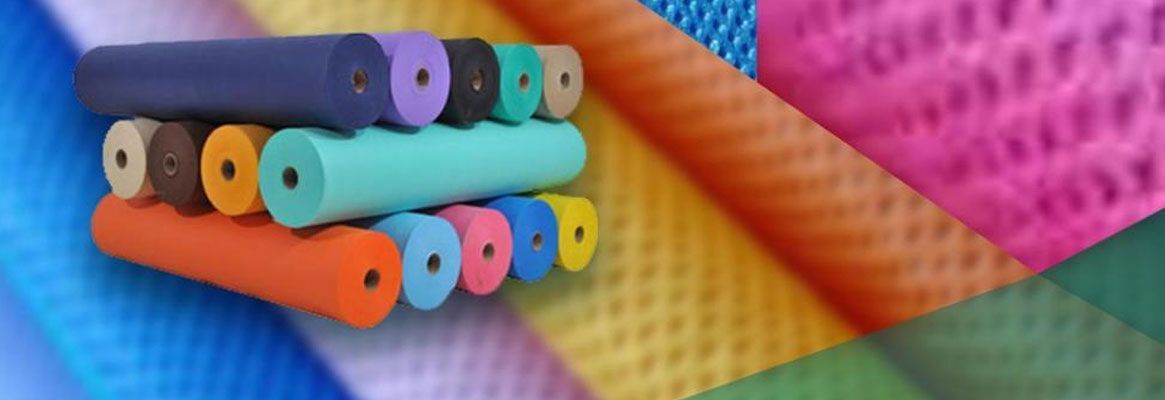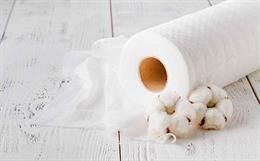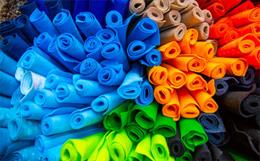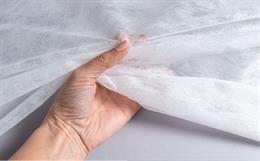Introduction
Plasma is partially-ionized gasnormally generated by an electrical discharge at near ambient temperatures.Plasma, often considered as the fourth state of matter, is composed of anionized gas containing a mixture of ions, electron, neutral and excitedmolecule, and photons. The main attraction of plasma in industrial processing arein the avoidance of chemical effluents, beside low cost, rapid reaction times,high cleaning efficiency, enclosed & day nature of process. (1)
Usually three different types ofplasma processes are referred to. One is the modification of surface structureof the material itself under the influence of the glow discharge mostlyperformed with non polymerisable precursors such as noble gases, nitrogen,oxygen, hydrogen, ammonia or water vapour. The second, plasma polymerization,i.e. the deposition of thin polymer film on the surface by using organic, organosilicone or organo metallic vapours. The third is the plasma grafting after activationof the surface by means of plasma treatment (2).
The various ways by which atextile substrate can be modified with the help of plasma treatment include (3).removing surface matter, such as fibre finishes, size, contaminants and thelike from fibre surfaces, also the etching of fibre surfaces to reduce fibrediameters; activating surfaces to change their polarity, polar surfaces will bemade more non-polar to render them repellent to liquids and reduce adhesion ofsoil particles, non-polar surfaces will made more polar to improve waterwetting and soil release properties; depositing thin films of materials onsurfaces to alter their properties. For example diamond like, ceramic like orfluorinated surfaces to alter the co-efficient of friction and the hardness ofwear surfaces and fibre surfaces.
Polypropylene Nonwovens
Polypropylene nonwovens find itsapplications in many fields. Melt blown polypropylene is used as an absorbabledressing material in medical textiles. Polypropylene as a facing materialcoupled with an absorbent substrate and Polypropylene non-woven orthopediccushion bandages are used under plaster casts and compression bandages forpadding and comfort. Because of its excellent acid, alkali resistance and less cost,it has been used widely as filter fabrics. Especially in liquid filtration,needle punched, adhesive bonded, impregnated and calendered non-wovens areused. Polypropylene non-wovens are used in clothing, for example, anorks in bedcovers and coverlets and in furniture in padding. This padding improves heatinsulation and offers greater comfort where important criteria are fatiguestrength is of care.
Plasma Treatment
Polypropylene has a very lowvalue of the surface free energy (approximately 20-25 mJ/m2. Due tolow surface energy, polypropylene has very weak hydrophilic properties. In manyindustrial applications, there is a need to modify the polymer surface withkeeping their desired bulk properties unchanged. Chemical activation of thesurfaces is the most often used method for their activations; however, theecological requirements force the industry to search alternative environmentalsafety methods. The surface modification of polymers by low temperature plasmaappears as one of the most prospective and cheap solutions.
Plasma treatment of Polypropyleneproceeds by a free radical mechanism that introduces a wide variety of oxidizedfunctional groups onto the surface of the treated polymer. These oxidizedfunctional groups may include C-OH, C=O, COOH, C-O-C, epoxy, ester, or hydroperoxide and they are responsible for the change in the polymer surfaceproperties.
Plasma treatment of Polypropylenehas a great degree of impact on surface morphology and fabric wetability. Plasmatreatment results in increase in surface energy of Polypropylene and confirmingthe presence of polar groups on the surface with decrease in contact angle (4, 5).(He - O2) plasma, makes the surface rough, rippled and only slightlyaffected [6]. When plasma treatment was given at low temperature for fewminutes with CO2 gas and CO2 O2 mixturemakes the Polypropylene webs wettable [7]. [N2 + H2 + He]significantly improves the dyeability of Polypropylene spun bonded nonwovenswebs [8]
Surface modification usingDielectric Barrier Discharge [DBD] plasma changes the hydrophobic characterinto an increasingly hydrophilic nature which was confirmed by the decreasedcontact angle from 90 to 55 [9]. Atmospheric glow plasma treatment withreactive gases like He, Ar, Air, CO2 of Polypropylene melt blownnonwoven also increases the wettability [7]
The fictionalization with the bonds such as C-H, C-C, C-N, C-O-C and C-O-H on the surface of the Polypropylene along with increased surface energy was observed in the atmospheric pressure plasma treated with gasses such as N2, H2, NH3 and mixture on Polypropylene plates (10). Plasma treatment with polymerisable monomers causes significant surface modification in Polypropylene. When such treatment was given with O2 gas and Acrylic acid monomer, it was found that surface etching followed by polymer coating takes place and enhances the electrochemical properties of Polypropylene [11] Generation of Carbonyl, ester and OH groups with increased oxygen content has also been confirmed by Denes. et al [12]
Plasma polymerization / grafting on Polypropylene fabrics with Acrylonitrile [13], Hexamethyldisoloxane (HMDSO) [14] Melamine and Urea [15], have been studied by various researchers. The structural changes and functionalities generated has resulted in achieving certain desirable properties in Polypropylene.
Grafting with acrylonitrile cold plasma leads to improved water absorption and dyeing properties, with HMDSO using RF cold plasma, lowers the water uptake value with increased contact angle.
Several methods for changing the wetability of Polypropylene using plasma technology has been reported in literature. Corona discharge plasma is reported to incorporate oxygen containing functional groups such as Hydroperoxide, ROOH, ions and neutral functional groups such as RCOOR, R3COR, R2CO, which helps in improving wettability and adhesion [16].
Besides improving the wettability, corona treatment also improves the antistatic and friction properties of spin finished Polypropylene [17].
Polypropylene non-woven filter webs were used for Oxidative plasma treatment and the treated samples were tested for wetability using liquids with a range of surface tensions and also the filtration time for fixed amounts of water determined. Reference materials without plasma treatment can only be wetted with liquids with surface tension <35 m N/m without treatment, no water can pass through the Polypropylene-web without applying a high pressure Polypropylene oxidative plasma treatments can be very beneficial in order to improve wetability and increase the surface tensions. However the treatment conditions should be selected with utmost care especially since selecting conditions that are too aggressive will result in a lowering of the positive effects [18]. The experiments will carried out in a roll-to-roll batching machine.
Water droplets were formed in the cooled oxygen plasma treatment fibres by directly condensing water from the vapour phase. Contact angles of water on fibre surface were measured from the Environmental Scanning Electron Microscope micrographs. From the results, the plasma treatment significantly altered the surface wetability of Polypropylene fibres [19].
Atmospheric plasma with fluorocarbon gas at RF-5 KHz given on non-woven fabric makes the fabric more hydrophobic due to considerably large amount of pressure in the water column (388.87 mm). It provides good barrier against blood and water and can even provide a barrier against microbes, which makes it a better finish for surgical gowns than commercially available fabric [20].
Yousefi et al. (21) studied the surface modification of biaxially-oriented polypropylene (BOPP) films by low temperature, low pressure oxygen plasma treatment. SEM shows CH2 groups of Polypropylene were reduced by hydrogen loss and polymer degradation due to oxygen plasma etching. The spectra represented new functional groups assigned CO and OH absorption bands. Creation of polar groups such as hydroxyl and carboxyl on the surface increased the surface energy and wetability. Marian McCord et al. treated atmospheric plasma on Polypropylene, which alters the surface chemistry and morphology of Polypropylene [22]
Yoon J. Hwang studied from the spectroscopy analysis, reveals that the surface oxidation by the formation of hydrophilic groups enhances the surface wetability of the Polypropylene non-woven fabrics with He atmospheric pressure glow discharge plasma treatment. Plasma treatment increase fibre to fibre friction, playing an important role in enhancing a tensile strength, low stress mechanical properties and air permeability [23]
Hocker (9) observed that the barrier discharge or corona treatment of Polypropylene fibres significantly increases the hydrophilicity of the surface, the contact angle of water being decreased from 90 to 55. Even after two weeks, a sustained effect was observed, the contact angle of water being 60. Instead of the contact angle of water, the oxygen/carbon ratio of the atomic composition of the surface can be used to follow the influence of a plasma treatment, in particular for Polypropylene fleeces with layered structure. The oxygen/carbon ratio for the first layer was highest; but even at the tenth layer a significant effect was observed.
The uptake of oxygen at a Polypropylene surface is even more significantly demonstrated when maleic acid anhydride (MAH) is used as an assisting reagent. The incorporation of oxygen is permanent and a contact angle with water of 42 can be achieved. Plasma treatment of Polypropylene and indulin kraft lignin can also be carried out in specially designed electrodeless plasma reactor aiming at improvement in strength of the composites made from these materials and efficient surface modification, thus avoiding long reaction times and use of large volume reactants. This ensured effective implantations of reactive functional groups on lignin surface. [24].
Plasma treatments showed promise for producing hydroscopicity in fibres, altering degradation rates of biomedical materials (such as sutures) and depositing anti real coatings. Plasmas are used to provide clean hydrophilic surfaces and to change the state characteristics and sterilize medical components (25). Tyan, et al., (26) utilize low temperature, high density microwave plasma to activate PP nonwoven structures followed by coupling agent inclusion and collagen immobilization for biomedical applications.
Plasma anti-microbial treatment of polypropylene nonwoven fabrics for surgical gowns using fluorocarbon gas was found to have effect such as it does not alter weight, thickness, stiffness, air-permeability, breaking strength and elongation. The fabric also becomes water repellent with high blood and water resistant with inhibition for microbes growth
Oxygenated helium plasma was used to enhance initiation of graft copolymerization of glycidyel metha acrylate [27] in Polypropylene nonwoven to synthesize biocidal fabrics proved to be antistatic, antimicrobial and insect repellent.
Qufu wet et al., (28) have found plasma treated Polypropylene nonwoven treated with oxygen gas plasma improving the dynamic water absorption properties in which fibre fineness place an important role. Surface dielectric barrier discharge which find wide spread applications in ozone production, were used to hydrophilise light weight Polypropylene nonwoven fabric (29) the samples were treated with nitrogen plasma and the method was found to be used potentially in laminating, printing, metal plating lines etc. Oxygen and nitrogen functionalizing gasses were mixed to give low temperature atmospheric plasma treatment with a roll-to-roll system showed direct improvement in wettability tested by capillary tests (30)
Conclusion
Plasma treatment enlarges the application areas of polypropylene nonwovens. Surface modification in terms of physical and chemical structures enables Polypropylene fibres to find its application in various areas such as coating, medical, clothing, filtration, laminating, dyeing, printing etc.
References
- Kartick Sacanta, Manjeet Jassal and Ashwini Agarwal, Indian Journal of Fibre & Textile Research, Vol. 31, 2006, pp83-98
- Vohrer. V, Muller M. Oehr. C Surface and Coatings technology, Vol. 98, No. 12, 1998
- Charles Tomasino, National Textile Centre, Annual report, Sep. 1994 (S94-13), p333
- Shihoo. R. Journal of Coated Fabrics, Vol. 26, No. 7, 1996, p26
- Su C. I., Yeh R. S. & Wang C. C., Textile Research Journal, Vol. 74, No. 9, 2004, p776.
- Mccord M. G. et al., Textile Research Journal, Vol. 72, No. 6, 2002, p491.
- Tsai P. P., Wadsworth I. C. and Roth J. R., Textile Research Journal, Vol. 67, No. 5, 1997, p359
- Zhang D., Sun Q, Zhao R and L C Wadsworth, Textile Chemist and Colourist and American Dyestuff Reporter, Vol. 32, No. 10, 2000, p32
- Hocker H, Pure Applied Chemistry., Vol. 74, 2002, p423
- Bourbigot S, Jama C, Bras M Z, Delobel R, Dessuaxo & Goudmand P Polymer Degradation Stability, Vol. 66, 1999, p153
- Basarir F, Choli EY, Moon SH, Song KC & Yoon TH. J. Membrane Science 260 (1-2) (2005) 66
- Denes F. et al., Journal of Photopolymer Science and Technology, Vol. 10, No. 1, 1997, p91-112
- Sarmadi. M. et al., Textile Research Journal, Vol. 63, No. 12, Dec. 1993, p697-705
- Sarmadi. M. et al. European Polymer Journal, Vol. 31, No. 9, Sep. 1995 p847-857
|
15. |
Ganapathy R. et al. Journal of Photopolymer Science and Technology Vol. 9, No. 2, 1996, p181-200 |
|
16. |
Tsuhiya, Y. et al. Progress in Organic Coatings, Vol. 34, No. 1-4 July 1998 p100-107 |
|
17. |
Havtojarvi, J and S. Laaksonen, Textile Research Journal Vol. 70, No. 5, May 2000, p391-396 |
|
18. |
Letcture 516, Europlasma Technical Paper, Tech Texil Symposium 1997, Session 5-1, Plasma Finishing |
|
19. |
Wei Q. F., et al. Journal of Industrial Textiles, Vol. 32, No. 1, 2002, p59-66 |
|
20. |
Rajpreet K. Virk et al. Textile Research Journal Vol. 74(12), 2004, p1073-1077 |
|
21. |
Yousefi H. R. et al. (2003), Surface and Interface Analysis, Vol. 35, 2003 p1015-1017 |
|
22. |
Marian McCord et al. National Textile Centre, NTC Project (99-NS09), Research Briefs Chemistry Competency, June 2002 |
|
23. |
Yoon J. Hwang et al., Textile Research Journal Vol. 75, No. 11, p771-778, 2005 |
|
24. |
Toriz, J. Ramos and R Young, Journal of Applied Polymer Science, Vol. 91, 2004, p1920 |
|
25. |
Kan C. W., Chan K, K., Yuen C. W. M. and M. H. M. Iao Textile Research Journal, Vol. 96, No. 6, 1999, p407 |
|
26. |
Tyan, Y-C, et al., Biomaterials Vol. 23, No. 1, Jan 2002, p6576 |
|
27. |
Gawish S. M. et al., Journal of Applied Polymer Science, Vol. 103, No. 3, p 1900-1910 |
|
28. |
Qufu Wet et al., Polymer Testing, Vol. 25, No. 5, p717,722, 2006 |
|
29. |
Jozef Rahel et al., Surface Coatings Technology, Vol. 103, No. 6, 2003, p 604-608 |
|
30. |
Rombola G. et al., Czec. Journal of Physics, Vol. 56, No. 10, 2006, p1021-1028
|
About the Authors:
The authors are associated with the Department of Textile Technology, Kumaraguru College of Technology, Coimbatore.
To read more articles on Textile, Industry, Technical Textile, Dyes & Chemicals, Machinery, Fashion, Apparel, Technology, Retail, Leather, Footwear & Jewellery, Software and General please visit http://articles.fibre2fashion.com
To promote your company, product and services via promotional article, follow
this link: http://www.fibre2fashion.com/services/article-writing-service/content-promotion-services.asp








